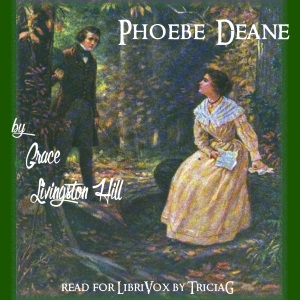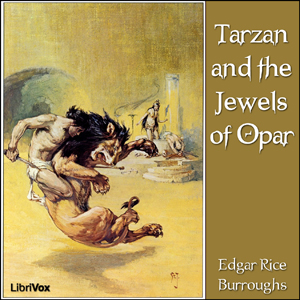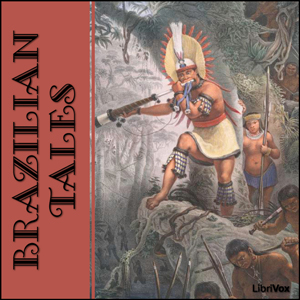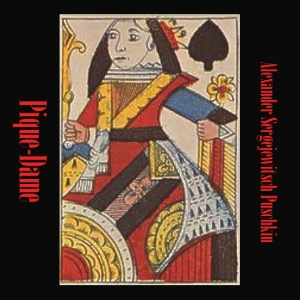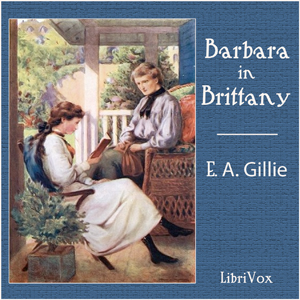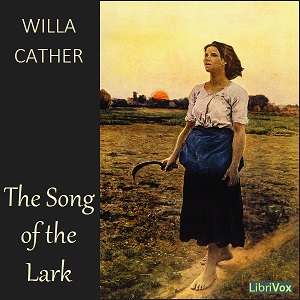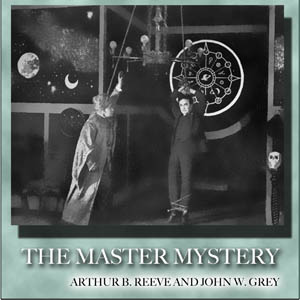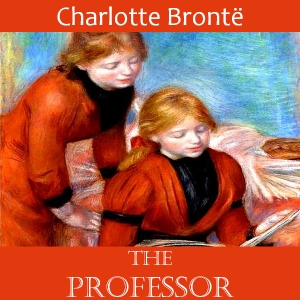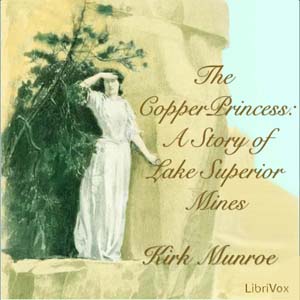This fragment of a novel was written by Jane Austen in 1804 and remained untitled and unpublished until her nephew James Edward Austen-Leigh printed it in his A Memoir of Jane Austen in 1871. The title is from him.
Mr Watson is a widowed clergyman with two sons and four daughters. The youngest daughter, Emma, has been brought up by a wealthy aunt and is consequently better educated and more refined than her sisters. But when her aunt contracts a foolish second marriage, Emma is obliged to return to her father's house. There she is chagrined by the crude and reckless husband-hunting of two of her twenty-something sisters.
(Summary from Gesine and Wikipedia)
6 episodes
Stephen Crane's first novel, Maggie: A Girl of the Streets has been called "the first dark flower of American Naturalism" for its distinctive elements of naturalistic fiction. The chief character, Maggie, descends into prostitution after being led astray by her lover. Rather than focusing on those that make up the very rich or middle class, the novel highlights the deplorable living conditions of the working class during the so-called Gilded Age in New York's Bowery. (Summary adapted from Wikipedia by Illiterati)
19 episodes
Oedipus the King (often known by the Latin title Oedipus Rex) is an Athenian tragedy by Sophocles that was first performed c. 429 BC. It was the second of Sophocles's three Theban plays to be produced, but it comes first in the internal chronology, followed by Oedipus at Colonus and then Antigone. Over the centuries, it has come to be regarded by many as the Greek tragedy par excellence. (Summary by Wikipedia)
Cast:
Oedipus: Andy Minter
Priest of Zeus: Hannah Dowell
Creon: Fr. Richard Zeile
Teiresias: BrianaTheBard
Jocasta: Leni
Messenger: Carolyn Francis
Second Messenger: pipsoul
Herd of Laius: hefyd
Chorus: Musicalheart1
Narrator: Elizabeth Klett
Audio edited by: Elizabeth Klett
2 episodes
Second book in the Marcia Schuyler trilogy. Phoebe Deane lives almost as a servant in her brother's home, tormented by her hateful sister-in-law. Schemes to marry her off swirl around her. Her fate seems to be marriage to an abusive man with several disobedient children, until a chance encounter in the woods one afternoon changes the course of her destiny. (Summary by TriciaG)
28 episodes
"Als Gregor Samsa eines Morgens aus unruhigen Träumen erwachte, fand er sich in seinem Bett zu einem ungeheueren Ungeziefer verwandelt..." So beginnt Kafka diesen Klassiker und beschreibt in seinem typischen Stil wie sich die plötzliche Verwandlung auf das weitere Leben Gregor Samsas auswirkt. (Zusammenfassung von Markus Wachenheim)
3 episodes
Several years before the events of the novel, Anne Elliott fell in love with a young and handsome but poor naval officer. She was persuaded by her friends and family to refuse him when he asked her to marry him. Now she meets him again...
28 episodes

Señor Gould is a native Costaguanan of English descent who owns the silver-mining concession in Sulaco. He is tired of the political instability in Costaguana and its concomitant corruption, and puts his weight behind the Ribierist project, which he believes will finally bring stability to the country after years of misrule and tyranny by self-serving dictators. Instead, the silver mine and the wealth it has generated become a magnet for local warlords to fight over, plunging Costaguana into a new round of chaos. Among others, the revolutionary Montero invades Sulaco; Señor Gould, adamant that his silver should not become spoil for his enemies, entrusts it to Nostromo, the trusted "capataz de los cargadores" (head longshoreman).
Nostromo is an Italian expatriate who has risen to that position through his daring exploits. ("Nostromo" is Italian for "mate" or "boatswain," as well as a contraction of nostro uomo — "our man.") He is so named by his employer, Captain Mitchell. "Nostromo's" real name is Giovanni Battista Fidanza — Fidanza meaning "trust" in archaic Italian.
Nostromo is what would today be called a shameless self-publicist. He is believed by Señor Gould to be incorruptible, and for this reason is entrusted with hiding the silver from the revolutionaries. He accepts the mission not out of loyalty to Señor Gould, but rather because he sees an opportunity to increase his own fame. (Summary from Wikipedia)
44 episodes
This is the fifth of Burrough's Tarzan novels.Tarzan finds himself bereft of his fortune and resolves to return to the jewel-room of Opar, leaving Jane to face unexpected danger at home. (Summary written by Sarah Jennings.)
24 episodes
"Brazilian Tales" is a collection of six short stories selected by Isaac Goldberg as best representative of the Brazilian Literature of his period - the end of the 19th century. His comprehensive preface aims at familiarizing the reader with a literature that was - and still is - virtually unknown outside the boundaries of its own land, and the pieces chosen by Goldberg to be translated belong to writers that reached popularity and appreciation while still alive. This "pioneer volume", as the translator himself puts it, still keeps its charm and interest as a way of offering to the English speaking public some "sample cases" of Brazilian Literature. (Summary by Leni)
7 episodes
Die Geschichte eines jungen Mannes, der das Herz einer armen Pflegetochter bricht, um an das Geheimnis einer alten Dame zu gelangen. (Summary by Herr Klugbeisser)
6 episodes
Barbara, an English girl and the eldest of her family, spends most days helping her widowed mother care for her younger siblings. Then disaster strikes - or so the children believe! Barbara is taken to France to see Paris by her father's formidable sister, Aunt Anne. She stays on in Brittany to perfect her French. In this series of funny stories about her adventures in France, we meet a cast of recurring characters - and both Barbara and Aunt Anne find love! (Summary by Sibella Denton)
20 episodes
Set in the 1890s in Moonstone, a fictional place supposedly located in Colorado, The Song of the Lark is the self-portrait of an artist in the making. The story revolves around an ambitious young heroine, Thea Kronborg, who leaves her hometown to go to the big city to fulfill her dream of becoming a famous opera star.
The novel captures Thea's independent-mindedness, her strong work ethic, and her ascent to her highest achievement. At each step along the way, her realization of the mediocrity of her peers propels her to greater levels of accomplishment, but in the course of her ascent she must discard those relationships which no longer serve her. (Summary by Wikipedia)
38 episodes
This book is in no degree an attempt to relate the involved and intricate history of the Middle Ages. Its plan is, rather, to present pictures of the manner of life and habits of thought of the people who lived between the eighth and fifteenth centuries. Our writings and our everyday conversation are full of their phrases and of allusions to their ideas. Many of our thoughts and feelings and instincts, of our very follies and superstitions, have descended to us from them. To become better acquainted with them is to explain ourselves. (Summary from the Preface of When Knights Were Bold.)
16 episodes
A lone space traveler arrives on Earth seeking a new planet to colonize, his own world dead. At the same time a mysterious plague has infected Earth that will wipe out all life. Can a lone scientist stop the plague and save the world? Or will the alien find himself on another doomed planet? (Summary by Mark Nelson)
7 episodes
Anthony Trollope sets the scene for his wonderful Chronicles of Barsetshire with this short novel about Septimus Harding's challenged ecclesiastical seat as the warden of Hiram's Hospital. To make things more interesting, the man doing the challenging - John Bold - also happens to be courting Mr. Harding's daughter, Eleanor. (Summary by JessicaLouise)
Novels in the series are:
1-The Warden
1-The Warden (version 2)
2-Barchester Towers
3-Doctor Thorne
4-Framley Parsonage
5-The Small House at Allington
6-The Last Chronicle of Barset
21 episodes
An unidentified space ship lands in a Colorado lake. Equipped with a paralyzing ray weapon, the creatures begin taking human prisoners. A lone land surveyor and a journalist are trapped inside the Army cordon, which is helpless against the mysterious enemy. Can they stop the aliens before it is too late? (Summary by Mark Nelson)
10 episodes
English romantic adventure starring a young American in London and inspired by the personal ads (agony columns) in the London papers. In this treacherous tale of murder and intrigue young American Geoffrey West tracks a killer from the posh dining room of the Carlton Hotel to the opium dens of London's Limehouse district in search of the truth and the heart of his true love only to find the culprit all too close to home.Earl Derr Biggers is better known as the author of numerous Charlie Chan novels,The Agony Column was released as a movie under the name Second Floor Mystery in 1930. While this movie was in production, its two stars, Loretta Young and Grant Withers, eloped. (Summary by peac)
9 episodes
The novel has a convoluted plot about two distant cousins both named Allan Armadale. The father of one had murdered the father of the other (the two fathers are also named Allan Armadale). The story starts with a deathbed confession by the murderer in the form of a letter to be given to his baby son when he grows up. Many years are skipped over. The son, mistreated at home, runs away from his mother and stepfather, and takes up a wandering life under the assumed name of Ozias Midwinter."
Summary from wikipedia).
66 episodes
Jungle Tales of Tarzan is a collection of twelve loosely-connected short stories written by Edgar Rice Burroughs, comprising the sixth book in order of publication in his series about the title character Tarzan. Chronologically, the events recounted in it actually occur between chapters 12 and 13 of the first Tarzan novel, Tarzan of the Apes. (Summary from Wikipedia)
12 episodes
In dieser amüsanten Novellensammlung, die zu den Klassikern der deutschsprachigen Literatur gehört, beschreibt Keller anhand der Bürger von Seldwyla karikativ Merkmale der Gesellschaft des 19. Jahrhunderts. In "Pankraz der Schmoller" geht es um einen Jungen, der als schmollender Versager in traurigen Verhältnissen aufwächst und seine positiven Entwicklung nachdem er sein zu Hause verlässt ... "Romeo und Julia auf dem Dorfe" ist eine Variante der bekannten Liebesgeschichte zwischen den Kindern zweier verfeindeter Bauern ... Eine allein erziehende Mutter zieht durch Liebe und gutes Vorbild in "Frau Regel Amrain und ihr Jüngster" entgegen Seldwyler Sitte einen vorbildlichen Sohn groß... (Summary by Markus Wachenheim)
15 episodes

Première partie Autour de Mme Swann Dans cette première partie du roman, le narrateur parle de ses relations à Combray, entre autres celles eues avec M. de Norpois ou encore avec son idole littéraire Bergotte. Il va également pour la première fois au théâtre où il voit enfin l'actrice qu'il aime tant, la Berma, interprétant Phèdre de Racine. On y lit ses déceptions incomprises par les autres vis-à-vis de sa première vision théâtrale. Puis, il arrive à se faire introduire chez les Swann. Alors sont décrites ses relations avec Gilberte, Odette de Crécy et Charles Swann. Ce dernier le prend en amitié, est très agréable avec lui, tout comme sa femme qui lui demandera de venir la voir personnellement même s'il n'a plus envie de rencontrer Gilberte, qu'il aime toujours, mais dont le sentiment à son égard -tout comme leur relation- va se désagréger peu à peu jusqu'au jour où il partira pour le pays qui l'attire tant : Balbec. Seconde partie Noms de pays : Le pays Arrivé dans la contrée dont il a tant voulu voir les cathédrales, le narrateur s'installe avec sa grand-mère et Françoise dans un hôtel pour un certain temps. Au début, sa vie est très solitaire, ne connaissant personne, il ne parle quasiment à personne hormis sa grand-mère, bien qu'il en ait très envie. Mais, de relations en relations, fréquentant Robert de Saint-Loup et le peintre Elstir entre autres (qui est l'artiste ami des Verdurin dont il est question dans Un amour de Swann : M. Biche), il finit par réussir à se lier d'amitié avec les jeunes filles qu'il observait depuis longtemps : Albertine, Andrée, Rosemonde... Il tombe amoureux d'Albertine qu'il essaie de rendre jalouse en se rapprochant d'Andrée, mais tous ses efforts seront réduits à néant lors d'une tentative de changement de relation vers la fin de l'ouvrage.
110 episodes
In 1877, two gentlemen, Messrs Tonnison and Berreggnog, head into Ireland to spend a week fishing in the village of Kraighten. While there, they discover in the ruins of a very curious house a diary of the man who had once owned it. Its torn pages seem to hint at an evil beyond anything that existed on this side of the curtains of impossibility. This is a classic novel that worked to slowly bridge the gap between the British fantastic and supernatural authors of the later 19th century and modern horror fiction. Classic American horror writer H. P. Lovecraft lists this and other works by Hodgson among his greatest influences. (Summary by Wikipedia)
27 episodes
Die Geschichte einer spät gesühnten Beleidigung ... (Summary by Herr Klugbeisser)
2 episodes
Boswell's famous work on the life of his admired friend Johnson, the formidable poet, essayist, moralist, literary critic, biographer, editor and lexicographer, is a milestone in the development of biographical writing, a treasure-house of Johnson's witticisms and opinions, and a window on his social circle that is packed with incidental detail of 18th-century life and concerns.This second of four volumes covers the years 1764-1776. (Summary by Philippa)
22 episodes
While Harry Houdini didn't rise to fame as a screen actor, silent film makers of the day sought to capitalize on his fame. The Master Mystery was Houdini's first such attempt, and it was embraced by the viewing public, leading to other screen roles following.
The hero (or superhero) is Quentin Locke, scientist, agent of the U.S. Justice Department, and not surprisingly, an escape artist extraordinaire.
The Master Mystery follows agent Locke through many pitfalls, in true serial fashion, as he is tasked with uncovering a band of thugs and a peculiar metal robot (reportedly the first robot in film) with a brain, called an automaton, which has been robbing potential inventors of their patent rights.
All in good fun by today's standards, we find our hero escaping a straightjacket, a diver's suit, and an electric chair to name but a few, and of course winning the hand of the daughter of one of the industrialists along the way. (Summary by Roger Melin)
25 episodes
Das rätselhafte Porträt eines toten Knaben und die Aufzeichnungen des Malers Johannes aus dem 17. Jahrhundert führen den Erzähler der Rahmengeschichte auf die Spuren einer unglücklichen Liebe und zur allmählichen Enthüllung des Schicksals des gemalten Kindes.(Summary by Al-Kadi)
7 episodes

The Bluebird Books is a series of novels popular with teenage girls in the 1910s and 1920s. The series was begun by L. Frank Baum using his Edith Van Dyne pseudonym, then continued by at least three others, all using the same pseudonym. Baum wrote the first four books in the series, possibly with help from his son, Harry Neal Baum, on the third.
The books are concerned with adolescent girl detectives— a concept Baum had experimented with earlier, in The Daring Twins (1911) and Phoebe Daring (1912). The Bluebird series began with Mary Louise, originally written as a tribute to Baum's favorite sister, Mary Louise Baum Brewster. Baum's publisher, Reilly & Britton, rejected that manuscript, apparently judging the heroine too independent. Baum wrote a new version of the book; the original manuscript is lost.
The title character is Mary Louise Burrows.In this volume, Mary Louise and Gran'pa Jim take a house for the summer in a quiet place called Cragg's Crossing. There, they meet with any number of peculiar people - and one very peculiar mystery!! (Summary from Wikipedia and Sibella Denton)
28 episodes
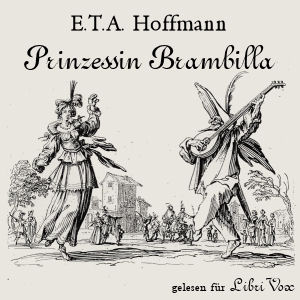
Eine allegorische-phantastische Märchenerzählung aus der Zeit der Romantik. Schauplatz ist ein zeitloser Römischer Karneval, wie Jacques Callot ihn in der Graphik-Serie "Balli di Sfessania" dargestellt hat. Die Kräfte der Liebe, der Phantasie, des Humors – gebündelt und gesteigert in der Kunst, und im Römischen Karneval - gewähren es einem liebenden Paar, sich über alle Alltagskleinlichkeit erhaben zu fühlen. Nachdem jedes der beiden sich anfangs immer wieder mit seinem Möchtegern-Ich verwechselt, öffnet die dann gewonnene Selbsterkenntnis und damit verbundene realistische Bescheidenheit das Tor zu dauerhaftem Glück. (Summary by Rolf Kaiser)Filet ist ein franz. Wort und bedeutet eigentlich so viel als Fädchen, Garn, Netz. Gewöhnlich versteht man darunter ein aus roher Seide netzartig gewebtes Zeuch, zu Shawls, Busentüchern u.s.w. Eine Lieblingsbeschäftigung der Damen ist es, allerlei Filetputzsachen aus Zwirn, Wolle oder Seide zu stricken; sie bedienen sich dazu einer Nadel, der Filetnadel, und eines Stäbchens, auf welches sie die Maschen aufreihen, und von dessen Stärke die größere und geringere Dichtigkeit des Gestrickes abhängt. (Brockhaus Bilder-Conversations-Lexikon, Band 2. Leipzig 1838., S. 38-39.)
9 episodes
The book tells the story of a young man named William Crimsworth. It describes his maturation, his loves and his eventual career as a professor at an all-girl's school. (Summary from Wikipedia, adapted by Stav Nisser)
28 episodes

Charlotte Perkins Gilman opens a window of history through which we can see a small part of the determined efforts made by women to elevate the circumstances of women in the early 20th century.Diantha Bell is a normal young woman desiring marriage and a home, but also a challenging career in a new territory which raises many eyebrows and sets malicious tongues wagging. Her effort to elevate housework and cooking to a regulated and even scientific business, for the relief of homemakers, is a depiction of the late 19th century movement to promote Domestic Science, or Home Economics, as a means of providing more healthful home life, as well as career paths for women.Diantha's business prospers as she shows her excellent gifts of administration, organization and homemaking. She grows an empire, and brings happiness and wholesomeness to every area of endeavor which she carefully attempts.The improvements in women's opportunities have not been available very long, indeed.This is a good reminder.
14 episodes
The Money Moon is a light-hearted romance. Jilted in love, our American millionaire hero, George Bellow, takes a walking tour of the Kent countryside to overcome the “Haunting Spectre of the Might Have Been”. Along the way he makes friends with a young boy out to discover a fortune to save his Aunt Anthea from having to sell the family estate and George discovers his ideal “Arcadia” and true love. (Summary by John Lieder)
31 episodes

"The wrongdoing of one generation lives into the successive ones and... becomes a pure and uncontrollable mischief." Hawthorne's moral for "The House of the Seven Gables," taken from the Preface, accurately presages his story. The full weight of the gloomy mansion of the title seems to sit on the fortunes of the Pyncheon family. An ancestor took advantage of the Salem witch trials to wrest away the land whereon the house would be raised... but the land's owner, about to be executed as a wizard, cursed the Pyncheon family until such time as they should make restitution.Now, almost two centuries later, the family is in real distress. Hepzibah, an old maid and resident of the house, is forced by advanced poverty to open a shop in a part of the house. Her brother Clifford has just been released from prison after serving a thirty-year sentence for murder, and his mind struggles to maintain any kind of hold on reality. Cousin Judge Jaffrey Pyncheon is making himself odious by threatening to have Clifford committed to an institution. And after all these years, the deed to a vast tract of land, that would settle great wealth on the family, is still missing.One bright ray of sunshine enters the house when cousin Phoebe arrives for an extended stay to allow unhappy matters in her end of the family to sort themselves out. While she lightens the lives of Hepzibah and Clifford, she also attracts the attention of a mysterious lodger named Holgrave, who has placed himself near the Pyncheon family for reasons that only come clear at the end of the story.The real crisis arrives when the Judge, who strongly resembles the Colonel Pyncheon who built the house so many years ago, steps up his demands on Hepzibah and Clifford and unwittingly triggers the curse. (Summary by Mark F. Smith)
22 episodes
Die Fürstin ist auf einem Spazierritt, als auf einem Jahrmarkt, auf dem auch wilde Tiere ausgestellt sind, ein Feuer ausbricht. Ein entkommener Tiger nähert sich dem Pferd der Fürstin... (Zusammenfassung von Gesine)
7 episodes
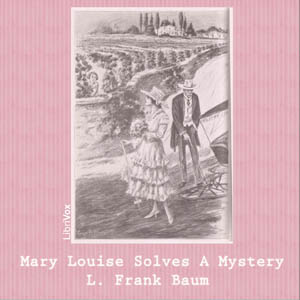
The Bluebird Books is a series of novels popular with teenage girls in the 1910s and 1920s. The series was begun by L. Frank Baum using his Edith Van Dyne pseudonym, then continued by at least three others, all using the same pseudonym. Baum wrote the first four books in the series, possibly with help from his son, Harry Neal Baum, on the third.The books are concerned with adolescent girl detectives— a concept Baum had experimented with earlier, in The Daring Twins (1911) and Phoebe Daring (1912). The Bluebird series began with Mary Louise, originally written as a tribute to Baum's favorite sister, Mary Louise Baum Brewster. Baum's publisher, Reilly & Britton, rejected that manuscript, apparently judging the heroine too independent. Baum wrote a new version of the book; the original manuscript is lost.The title character is Mary Louise Burrows. In this, the third book of the series, Mary Louise and her Grandfather happen upon a mysterious pair of Americans whilst travelling in Italy. Jason Jones is a failed artist, and his companion is his daughter, Alora, an heiress. When the girl is kidnapped, truths stemming back to the time of her parents' marriage are brought to light by Mary Louise and her friend Josie O'Gorman. (Summary by Wikipedia and Sibella Denton)
28 episodes
One of the two Historical novels Charles Dickens wrote, Barnaby Rudge is set around the ‘Gordon’ riots in London in 1780. The story begins in 1775 with Barnaby, his Mother, and his talking Raven Grip, fleeing their home from a blackmailer, and going into hiding. Joe Willet similarly finds he must leave his home to escape his Father’s ire, leaving behind the woman he loves. Five years later these characters, and many others whose lives we have followed, find themselves caught up in the horrific Protestant rioting led by Sir George Gordon. The mob which reaches 100,000 strong, gets out of hand, and there is danger to all in the path of their destruction. Charles Dickens skillfully weaves the lives of his many loving and many wicked characters through the rioting, and shows how this uprising changes so many lives. As a side note, Edgar Allan Poe is said to have been inspired by Barnaby’s raven Grip when he wrote his famous poem,”The Raven”.(Summary by Mil Nicholson)
83 episodes
Esther Ried Randall tries to live up to her parents' expectations and the name she's been given, but her religion is a chore. Will she learn the lesson of faith that Ester did? Fifth and final book in the Ester Ried series. Authored by Isabella M. Alden under the pen name “Pansy.” (Summary written by Tricia G)
30 episodes
LibriVox’s Short Story Collection 037: a collection of 20 short works of fiction in the public domain chosen and read by LibriVox members.
20 episodes
The Turmoil is the first novel in the 'Growth' trilogy, which also includes The Magnificent Ambersons (1918) and The Midlander (1923, retitled National Avenue in 1927). In 1942 Orson Welles directed a film version based on volume 2, also titled "The Magnificent Ambersons."
The trilogy traces the growth of the United States through the declining fortunes of three generations of the aristocratic Amberson family in a fictional Mid-Western town, between the end of the Civil War and the early part of the 20th century, a period of rapid industrialization and socio-economic change in America. The decline of the Ambersons is contrasted with the rising fortunes of industrial tycoons and other new-money families, which did not derive power from family names but by "doing things". As George Amberson's friend says, "don't you think being things is 'rahthuh bettuh' than doing things?" (Summary adapted from Wikipedia by Gesine)
33 episodes

The home of Roland Clewe, a small house plainly furnished, but good enough for a bachelor's quarters, stood not half a mile from the station, and near it were the extensive buildings which he called his Works. Here were laboratories, large machine-shops in which many men were busy at all sorts of strange contrivances in metal and other materials; and besides other small edifices there was a great round tower --like structure, with smooth iron walls thirty feet high and without windows, and which was lighted and ventilated from the top. This was Clewe's special workshop; and besides old Samuel Block and such workmen as were absolutely necessary and could be trusted, few people ever entered it but himself. The industries in the various buildings were diverse, some of them having no apparent relation to the others. Each of them was expected to turn out something which would revolutionize something or other in this world, but it was to his lens-house that Roland Clewe gave, in these days, his special attention. Here a great enterprise was soon to begin, more important in his eyes than anything else which had engaged human endeavor. . . .
25 episodes

The Bluebird Books is a series of novels popular with teenage girls in the 1910s and 1920s. The series was begun by L. Frank Baum using his Edith Van Dyne pseudonym, then continued by at least three others, all using the same pseudonym. Baum wrote the first four books in the series, possibly with help from his son, Harry Neal Baum, on the third.The books are concerned with adolescent girl detectives— a concept Baum had experimented with earlier, in The Daring Twins (1911) and Phoebe Daring (1912). The Bluebird series began with Mary Louise, originally written as a tribute to Baum's favorite sister, Mary Louise Baum Brewster. Baum's publisher, Reilly & Britton, rejected that manuscript, apparently judging the heroine too independent. Baum wrote a new version of the book; the original manuscript is lost. The title character is Mary Louise Burrows.In this, the fourth book of the series, Mary Louise and friends form a group dedicated to supporting the soldiers in World War I, and she brings Josie O'Gorman in to spoil a treasonous plot against the government. (Summary from Wikipedia and Sibella Denton)
26 episodes

To get away from city life periodically, New Yorker Roger Locke purchases an abandoned farm house in rural Connecticut, and with the assistance of his cousin Phillida and her beau Ethan Vere, he sets about fixing up the place.Immediately however, an unseen mysterious woman begins giving him warnings during nocturnal visits to leave the house at once. Soon he begins hearing strange ominous sounds emanating from the tiny lake at the back of the house coupled with a permeation of sickly odors. An evil presence then begins to visit him during the witching hours of the late night, challenging him to a battle of wits from which there can be only one victor.Is his mysterious female visitor there to help and encourage him to flee from the house, or is she working in tandem with The Thing From the Lake?A gripping, occasionally frightening tale, Ms. Ingram wastes no time in grabbing the reader into the story and manages to weave a tale that will leave the reader guessing at every turn of events. (Summary by Roger Melin)
22 episodes
"Pole Poppenspäler" erzählt die Geschichte der Kinderfreundschaft und späteren Liebe zwischen Paul Paulsen, dem Sohn eines angesehenen Bürgers einer norddeutschen Kleinstadt, und Lisei, der Tochter des fahrenden Puppenspielers Joseph Tendler. Die Städter lachen über Tendlers Spiel, ihn selbst und seine Familie jedoch verachten sie wegen ihres "Vagabundenlebens". Immer wieder müssen sich Pauls und Liseis Gefühle gegen die harten Vorurteile der Gesellschaft bewähren. (Summary by Al-Kadi)
5 episodes

Baroness Emma Orczy (full name: Emma ("Emmuska") Magdolna Rozália Mária Jozefa Borbála Orczy de Orczi) (September 23, 1865 – November 12, 1947) was a British novelist, playwright and artist of Hungarian noble origin. She was most notable for her series of novels featuring the Scarlet Pimpernel. Castles in the Air, a short novel or perhaps more like a collection of short stories with memories of a French rogue in the early 19th century Paris, was published in 1921 and about it I quote from the foreword: "In very truth my good friend Ratichon is an unblushing liar, thief, a forger--anything you will; his vanity is past belief, his scruples are non-existent. How he escaped a convict settlement it is difficult to imagine, and hard to realize that he died--presumably some years after the event recorded in the last chapter of his autobiography--a respected member of the community, honoured by that same society which should have raised a punitive hand against him." (Summary by Wikipedia, Lars Rolander and Emma Orczy)
16 episodes
Violet Strange, a clever petite detective, is called upon to solve the mystery of a page gone missing from an important document. The futures of several people, including an eccentric misanthrope, a chemical scientist, a bride and groom, depend on the quick resolution of this problem. In solving one mystery, she uncovers another which dates back many years.
(Summary by Bev J. Stevens)
3 episodes
The Copper Princess: A Story of Lake Superior Mines is an adventure set in the beautiful Upper Peninsula of Michigan. The delightful story features a brave and wholesome hero struggling for his rightful copper mining inheritance against smugglers and bandits. He also encounters a beautiful and mysterious maiden who is caught in her father's secret crimes. [Summary by Brenda Price]
Note: This book contains racial comments that may be offensive to modern listeners.
30 episodes
Some time after "Three Men in a Boat", George, Harris and Jerome decided to go on a cycling holiday through Germany.This relaxed and gently humorous story of the three friends wandering in and around the Black Forest is coloured by anecdotes, odd tales and Jerome's comments on the German people and their way of life.(Published in 1914. Summary by Peter Yearsley)
14 episodes
The Sea-Wolf is a novel written in 1904 by American author Jack London. An immediate bestseller, the first printing of forty thousand copies was sold out before publication. Of it, Ambrose Bierce wrote "The great thing—and it is among the greatest of things—is that tremendous creation, Wolf Larsen... the hewing out and setting up of such a figure is enough for a man to do in one lifetime." (Summary by Wikipedia)
39 episodes
Ein Brief seiner Stiefschwester zieht den jungen Mann Franz Grach zurück in seine Heimatstadt. Konfrontiert mit der provinziellen Spießbürgerlichkeit, erlebt er eine Zeitreise, die ihn nicht nur an Kindertage erinnert...
John Henry Mackays Erzählung ist nicht allein ein frühes Plädoyer für freie Liebe, sondern gleichsam eine Kritik an der Gesellschafts- und Wirtschaftsform seiner Zeit. (Summary by Ragnar)
4 episodes

Senhora é um dos mais importantes clássicos da literatura brasileira, e o terceiro livro do mesmo autor que analisa a situação da mulher na sociedade brasileira do século XIX. Através da história de amor e separação entre Aurélia e Fernando, o autor critica a decadência da elite cortesã, a importância dada ao dinheiro e os casamentos por interesse. O romance, dividido em quatro partes, reflete este objetivo em sua própria estrutura, em que imita uma transação comercial: preço, quitação, posse, resgate."Senhora" is one of the most important classics of Brazilian Literature, and the third book by this author about the situation of women in the 19th century Brazilian society. Through a story of love and separation between the two main characters, Aurélia and Fernando, the author criticizes the decadence of the court society, the importance given to possessions and the marriages for money. The novel, divided in four parts, satirizes these relationships in its own structure, by having its parts called: price, purchase, possession, solvency. (Summary by Leni)
41 episodes
Wilhelm Meisters Lehrjahre ist ein klassischer Bildungsroman von Johann Wolfgang von Goethe. Der wegweisende Entwicklungsroman erschien 1795/96. Der Roman besteht aus acht Büchern. (Zusammenfassung von Wikipedia)
107 episodes



